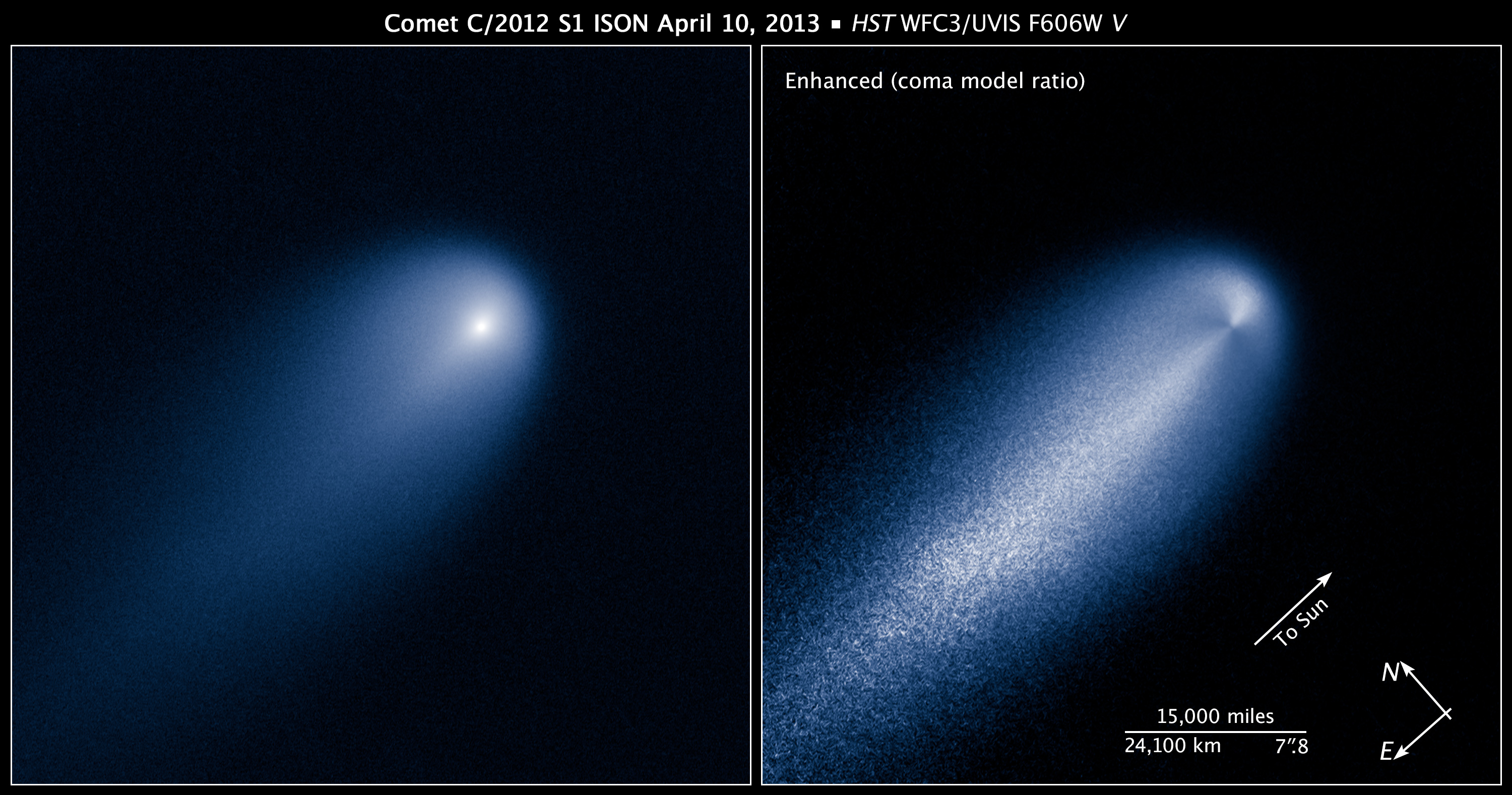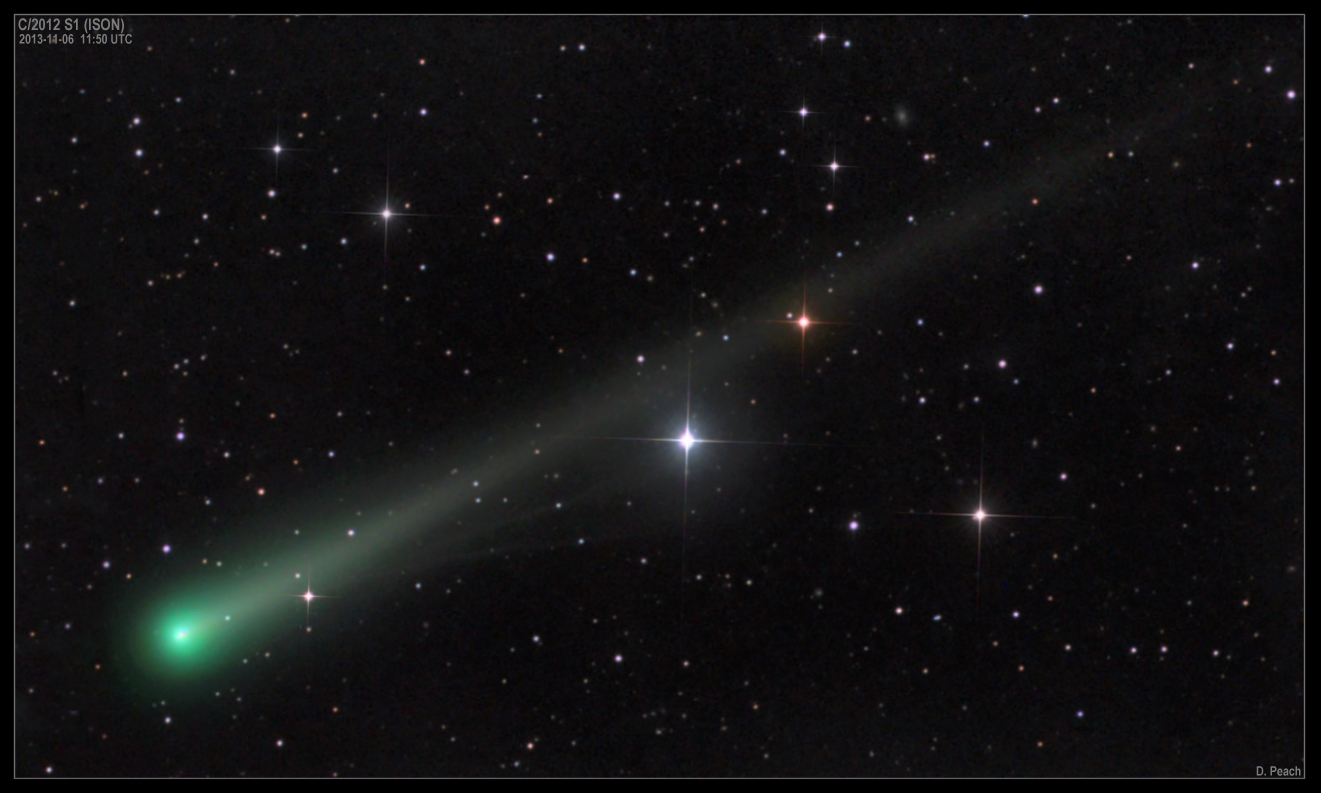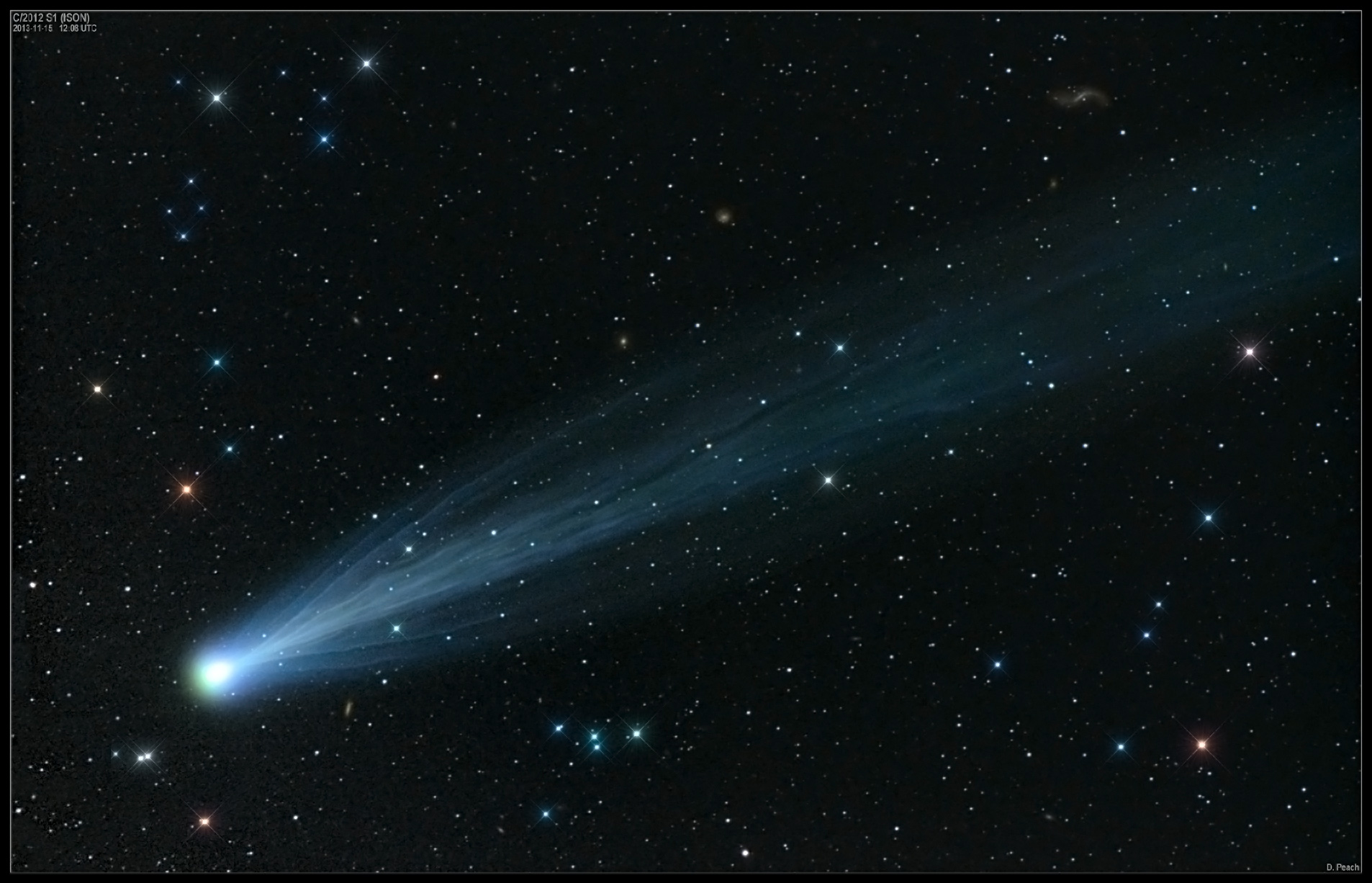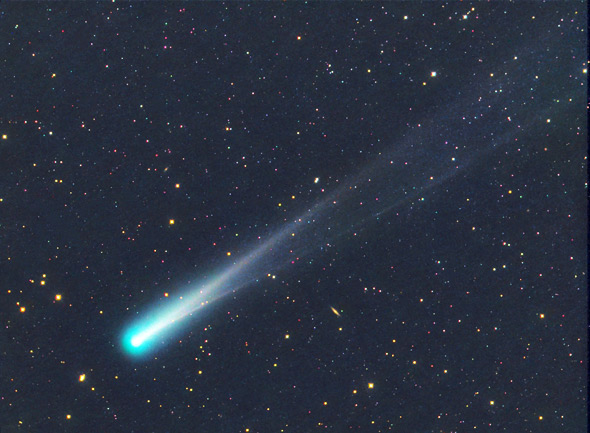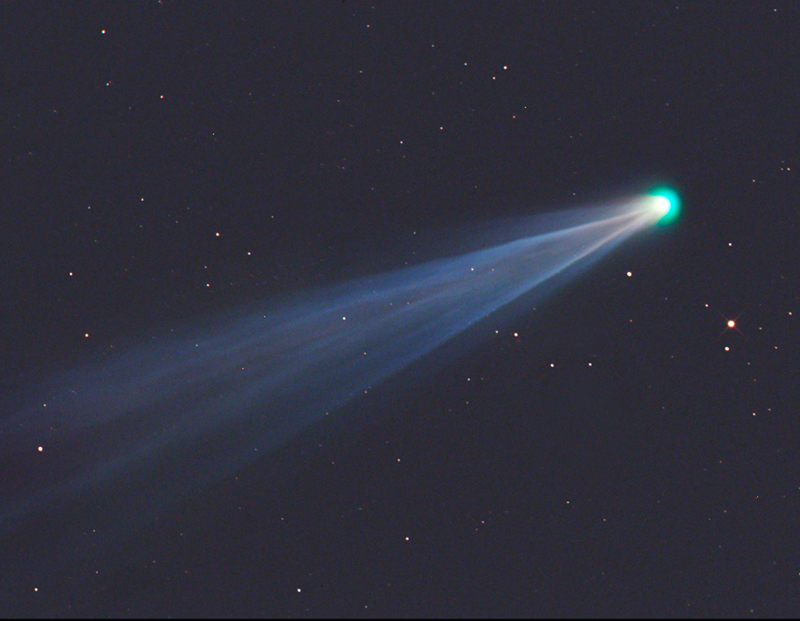Comet ISON
C/2012 S1 ( ISON ) was a comet that probably came from the Oort cloud, and on November 28, 2013 came very close to the Sun. Because of this tight approach he thus became one of the so-called Sonnenstreifern, however, was not a fragment of the Kreutz group.
Discovery
The comet was on 21 September 2012 by the amateur astronomers Vitali Nevski ( Виталий Невский ) from Belarus and Artyom Nowitschonok ( Артём Новичонок ) from Russia on CCD images, they come with a 40 -centimeter telescope of the International Scientific Optical Network ( ISON ) won, discovered as a weak nebula in the constellation Cancer. The comet was named after this organization.
Trajectory
On 1 October 2013, approached the Mars down to about 10.9 million km. In the course of the comet on November 28, 2013 reached closest to the Sun. In perihelion - ISON here had a line speed of about 360 km / s - was its distance from the sun is only about 0.012 AU (1.8 million miles), which is about one sun diameter. The temperature at the surface of the comet was in this case may have about 2500 ° C. After a strong loss of brightness, it was assumed that the comet was broken at its sun passage because of the high temperature and the strong tidal forces ( Roche limit ). Although photographs of the SOHO spacecraft have been interpreted to mean that at least a part of the comet had survived the perihelion, condensed from the 2nd December 2013, the belief that the former comet now is moving as a dust cloud through the solar system. Recent photographs from the Hubble Space Telescope from December 18, 2013 showed no remnants of the comet. The coordinates for suspected whereabouts were calculated from the last positions where ISON was still visible. In the recordings objects have up to the 25th magnitude can be represented, which would correspond ruins of about 160 meters in diameter or more. Since the images do not show any traces of ISON, it can be assumed that only gas, dust and other debris are left.
The closest approach to Earth was for ISON - calculated for the night from 26 to 27 December 2013, a distance of about 60 million kilometers - or his remains.
Visibility
The Max Planck Institute for Solar System Research announced on 18 November that he was visible to the naked eye from Earth. Initially it was assumed that he even briefly full moon brightness ( -12.7 mag) near the sun could reach. In fact, the brightness remained in perihelion much lower.
Research results
In February 2013 began with the observation of Comet ISON under the follow-on mission EPOXI spacecraft Deep Impact. Due to the trajectory took the observation of the comet about a month, which the researchers received extensive picture material for evaluation. This Orbiter and the Mars Reconnaissance Orbiter probes and Lunar Reconnaissance were used.


